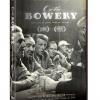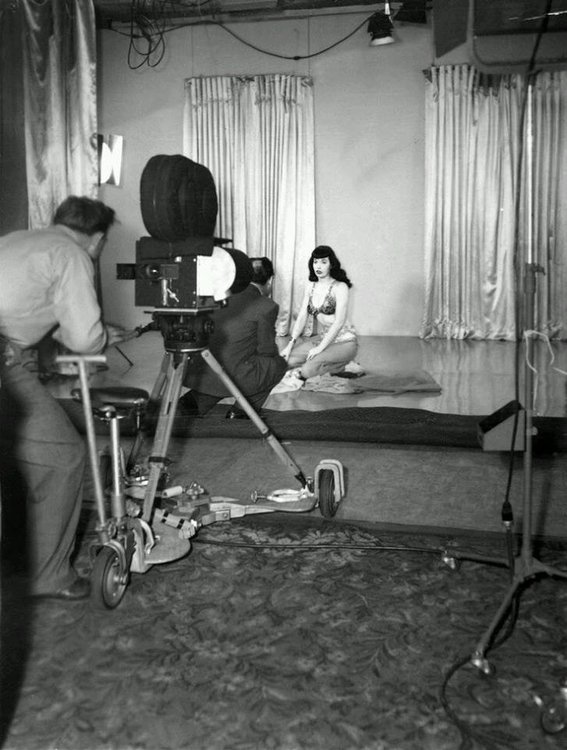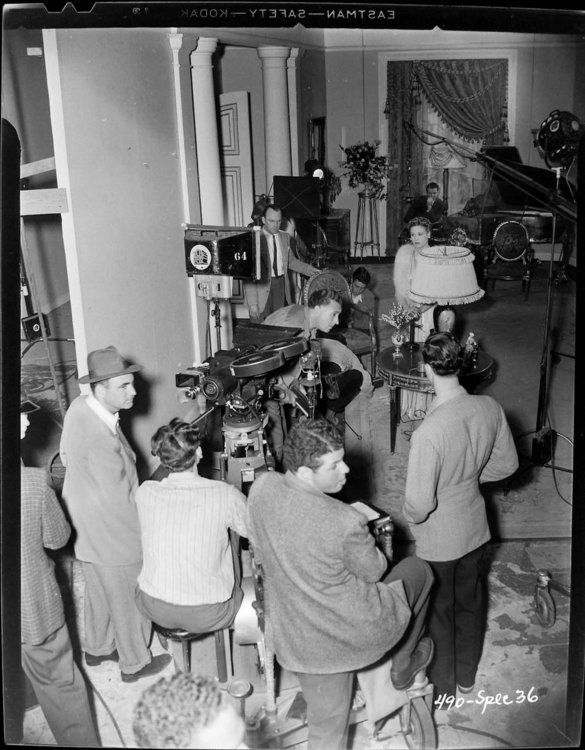-
Posts
2,483 -
Joined
-
Last visited
Everything posted by Daniel D. Teoli Jr.
-
One area that has not been discussed is that of 'putting all your eggs in one basket.' With all the prejudice and extreme views nowadays you can find your archive in trouble if you are ever put on the 'poop list.' If you read the art news you will have seen how doxing and shunning are very common nowadays if you don't toe the party line of what is politically correct at the current moment. http://www.artnews.com/2018/01/25/national-gallery-cancels-chuck-close-show-following-allegations-sexual-misconduct/ As an underground artist and curator, nothing really offends me. I can easily separate people from their art. I may hate the person, but love the art. I realize the artist needed to live the life they did to produce the art they did. Other people can't separate the two. It is all or none with them. I've seen this 'come and go' popularity first hand with my own work. Here are a couple examples. But have many more direct experience examples with this. In the past I had donated many projects to Yale Haas Art Library Special Collections. One day they changed curators and that was it for me. One curator may love you work, the next curator hates it. Of course, this is more of an issue with 'no strings attached' institutions that do not accept artworks into their permanent collection, such as special collection libraries as compared to art museums. But permanent collection or not, things can be deaccessed. If you are donating something to the institution, always refer to the Deed of Gift to see the terms. Some D.O.G.'s even make you sign away your copyright. In 2018 I received a package in the mail from Emory University Library Special Collections. In the package was 2 hand-printed artist's books I had donated to them a few years earlier. There was no note or anything regarding the return. The books were requested by Emory and accepted at the time of donation. But maybe a new director or curator came aboard and that was it. And it may be different for institutions collecting the entire archive of an artist. But I was told early on, they can't collect everything I produce. Guess it all balances on how famous you are. For my own work I've used more of a 'shotgun' approach to getting my work out there. Instead of banking on 1 institution, I've placed my work with 130+ institutions around the world. None of them have a definitive collection, especially of ephemera. But they make up a very broad collection that I hope will be safe from prejudicial trends and doxing as compared to 1 institution holding all the cards. Now, getting back to movie making. The wonderful thing about DVD donations versus artist's book donations is this. The DVD donation may cost $5 and take half an hour. The book donation may cost $160 and take a week to print. Sadly, everything that is donated to an institution does not make its way into their collection. About 15% - 20% of what I've donated seems to be lost. No one can or will answer what ever happened to the material. This brings up another topic to discuss possibly later. The unprofessionalism of many institutions.
-
Yes, concur Phil. In the early days of my work I was constantly turned down because of the 'no room' excuse. I offered digital files on DVD but institutions want the original artwork or nothing at all. It also could have been their excuse instead of saying they didn't like my work. But I think many archives are short on room. Hard to collect it all. Be we can collect varying degrees of sampling of different genres if we want to have a somewhat encyclopedic collection of material. That is how I run my archive anyway. I was an early adopter of digital collecting starting around 2010. About 15% of my archive is digital only. In the movie world a lot of what is being done is digital only. But it has not seemed to trickle down to museums. I'm working with some VHS now. Trying to put on DVD. Early 70's material . But already hard to find the ones I'm looking for.
-
Crazy stuff. What is next? https://www.artsy.net/news/artsy-editorial-anish-kapoor-banned-rivals-art-store A new art store opened this weekend in London’s posh Mayfair district, offering premium paints and pigments to anyone, except for world-renowned artist Anish Kapoor. A security guard equipped with a photo of Kapoor is posted at the shop’s door at all times to ensure he doesn’t get in. All shoppers are required to sign a disclaimer certifying that they are not affiliated with Kapoor or there to buy paint on his behalf.
-
Only prospective institutions can tell you. Probably if they are not too commercial in nature they may have some historical interest down the road. Although even if commercial, institutions would want to get an archive of famous / noteworthy filmmakers. So commercial or not, that may not be the deciding factor. The passage of time seems to make masterpieces out of almost anything. (Look at all the collectors of old 16mm TV commercials and movie trailers.) And some institutions may specialize in commercial collecting. I made 67 films this year on Instagram before they took away the 'like' button. I possibly have one of the world's largest collection of this material. (If this is worth anything for the historical record remains to be seen.) The Instagram film series ranges for 6.25 hours to about 10 minutes. The films are very simplistic in nature and are all about social documentary subject matter. I never have tried to place my short subject movies with institutions before. So I didn't know what to expect. I have a huge amount of experience placing photography and artist's books with institutions. Many thousand solicitations over the years. I wrote to about 15 institutions with DVD offers and was able to place about a dozen DVD's with 3 institutions: NYPL Special Collections University of Houston Special Collections FIT (Fashion Institute Special Collections - SUNY) Here is a shortened version of one of the films in the Instagram Series to give you an idea of what I am discussing. And bear in mind, when I speak of 'placing,' I am talking about donating the material. As a general rule, if you approach an institution, they expect a donation. If they approach you, they still hope for a donation, but you may be able to get some $$. And this generality varies depending on how famous you are and how much of a hard-on they have for you. From my work with still photos and books, the rejection rate is about 85% - 95% rejection rate for donations. (Some projects I spent 2-1/2 years on have been 100% rejection...for a donation.) What I like about working with movies as opposed to print / books is, the DVD's are very fast and cheap to produce. Producing a hand-printed artist's books is very time consuming and $$. Production of the source material used in the books / movies varies on how much you put into it. What I'm talking about is the final distribution costs books vs DVD. The benefit of books / photos over movies is; the printed material may have a longer archival life than the DVD, unless the institution takes care to back it up thoroughly. From my own experience, special collection libraries would not accept my work unless it was hand-printed, which makes it a work of art in its own right. Although they will collect commercially printed books if they really want it. I guess my work was not of that caliber, so I had to induce them by hand-making the books. If you are doing something that may be important down the road; don't forget to do a good job with archiving the ephemera related to the project. Strong NSFW https://danieldteolijrarchivalcollection.wordpress.com/2017/09/18/ephemera-an-often-overlooked-area-of-preservation/ A couple decades ago I never used to give ephemera any thought. Really, I used to trash ephemera. Then one day a curator asked if I had any ephemera to give them. That made me aware of the importance of ephemera.
-
-

david mullen David Mullen, ASC | The Love Witch
Daniel D. Teoli Jr. replied to Chris Pilarski's topic in Cinematographers
On what? Technical only or everything related to the movie?- 8 replies
-
- the love witch
- witch
- (and 4 more)
-

david mullen David Mullen, ASC | The Love Witch
Daniel D. Teoli Jr. replied to Chris Pilarski's topic in Cinematographers
Never heard of it. But ordered it from the library. Always wanted to see David's work. https://ohio.ent.sirsi.net/client/en_US/mfp/search/results?qu=the+love+witch&te= I saw David was consultant to 'Itty Bitty Titty Committee.' (I think) I was going to ask what a consultant does?- 8 replies
-
- the love witch
- witch
- (and 4 more)
-

RED screwing up the market even more in 20's?
Daniel D. Teoli Jr. replied to Max Field's topic in General Discussion
OP...sound great for the filmmaker! I wish this was the trend with film scanners. -

How Often do you Mute Someone's Reel?
Daniel D. Teoli Jr. replied to Max Field's topic in General Discussion
I seldom do unless it bothers my ears. It was put in for a reason. I can see someone muting my sound as 95% of my films just have projector sound as the sound track. I like projector sound, so it is music to my ears. -
https://archive.org/details/pioneering_filmmaker_da_pennebaker_dies_at_94
-
I'd never rent or loan any gear. Foolish.
- 17 replies
-
- camera rental
- renting
-
(and 2 more)
Tagged with:
-
-
A while back someone asked about flashlight to make lens flare for special effects. I've always used Surefire and still do. But the Streamlight tactical lights are impressive with their ability for taking abuse and for being budget priced. https://www.youtube.com/watch?v=qipVyi4HLpI&feature=youtu.be
-
Nobody doing any jobs? Not much action in this thread. How bout yesterdays office? 'Tin Pan Alley' 1940
-
Here is an interesting subject.Propaganda postcards from WW2! I made it with digital scans only. The postcard collector would not sell the collection. And even if he would sell it, I could not afford it. So he sold me scans of it. About 15% to 20% of my Archive is digital. Even if rich, you can't always buy everything you want. Digital collecting still makes it possible to put things in the archive.
-

Making 4K video of still photos
Daniel D. Teoli Jr. replied to Daniel D. Teoli Jr.'s topic in Post Production
I just was worried I would be advertising something wrong if I am offering 4K at 3840. I'm doing all future hi def work in 4096x2160. Prior to that I was doing 3840x2160. It is not that big a step up between the two, but the 4096 will fit the bill for 4K, so no one can complain. Some of my early work I only have in 3840. So if I get an inquiry I will tell them it is UHD and don't have it in 4K, but UHD is very close to it. Probably no one would complain either way. I'm dealing with curators of special collection libraries and art museums and possibly galleries. They are generally MA's or PhD's with art history degrees. I didn't even know what 4K was myself until a few days ago. I looked it up and it said the image is 4000 pixels wide. So that is an easy way to understand it. I guess a Blu-ray is a 1K. -

Making 4K video of still photos
Daniel D. Teoli Jr. replied to Daniel D. Teoli Jr.'s topic in Post Production
Well, I like to have the right nomenclature. There is always enough stuff to be critical of. Honesty of advertised specs should be basic. Thanks! -
I want to make some 4K video of still photos. My still photos are all hi-res scans that I am importing into the software. So I am not upscaling or photographing the photos, I'm downscaling scans. The software I'm using has 2 hi-res options for exports. Are either of these two OK to advertise as 4K or does 4K have to be the 4096x2160 only? 3840x2160 4096x2160 I don't care about the ratio on these options as my files are not widescreen. Also, can 4K be MP4 or AVI, does that matter at all? I plan to use the files for projection. Thanks
-
Have a large group of Civil War images in my digital archives. Here is some of it from the 1850s to 1870s. Read up on Mathew Brady. He financed the photo crew to document the Civil War and ended up dying broke. His photos were not well received. Everyone just wanted to forget about the Civil War and move on. (Some male nudity of soldiers showing battle wounds.)
-
Portfolio is basic. Keep at it. I started to make video portfolios or reviews of my photo projects. I used to just do standard still online portfolios. Video portfolios open up new display opportunities. Give it a try.







